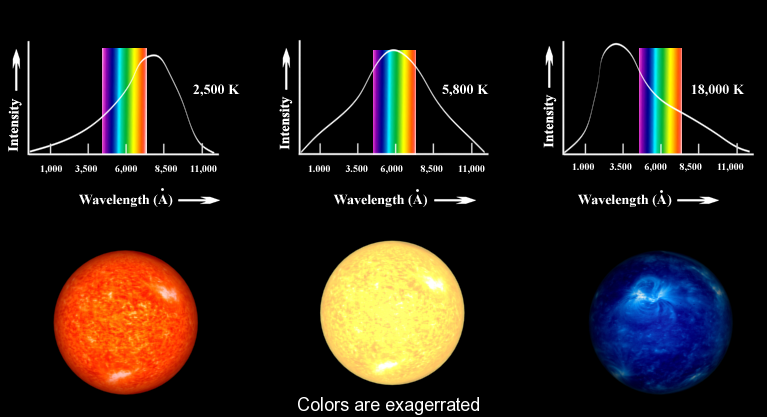How Do We Observe Star Formation
Making sense out of what we see.
The emergent spectral energy distribution (SED) of young stars changes drastically as they evolve. We are starting to put together a detailed picture of the observed properties of the stars culled from both observations and advances in theory in the last few decades. The detailed SEDs help us decide which wavelength region, or combination of wavelength regions, is best suited for each phase. However, we have to be mindful of the role of environment, which can significantly affect the emergent light from the young stars or protostars.
Observational astronomers use various diagnostics -- metrics -- to help them disentangle and interpret the observations. For this project, we will rely mostly on photometry diagnostics. The idea is pretty simple. Saying that the SED of the protostar changes with time means simply that the emergent light at specific wavelength changes with time. So, we select (cleverly) the specific sections of the SED, and plot the relative strengths of these selections against each other. The strength of the SED in a particular wavelength is (usually) photometry. The ratios of flux densities or difference in magnitudes (same thing) of these photometry measurements are generally referred to as a color. This use of the word 'color' is very different from how we normally talk about color. In "Normal Speak" color is the strength of light at a particular wavelength (e.g. Blue OR red). In the context of our photometry diagnostics color is (almost always) actually a ratio, or the relative strength of light at two different wavelengths (e.g. Blue AND Red). Why use color in this way? Its because it helps us understand the nature of the object itself, or at least distinguish between different types of objects.
Stars produce light in their cores just like a black body. The emergent light is not a black body, but is modified by several complexities: an atmosphere that absorbs or scatters the light at various frequencies, deformation in the shape of the star, etc. But, its close enough to a black body. Like a black body, each star's energy distribution peaks at the wavelength close to the predicted maximum for its black body equivalent. For hotter stars, this occurs at shorter wavelengths (higher frequencies) than their cooler counter parts.
 Image taken from http://docs.kde.org/stable/en/kdeedu/kstars/star_colors.png
Image taken from http://docs.kde.org/stable/en/kdeedu/kstars/star_colors.png
Because color, in photometry, refers to ratio of light at two different wavelengths, it cleverly tells us whether something is "hot" or "cold" depending on whether the shorter wavelength or the longer wavelength is stronger in its SED. A "hot" object is also referred to as "blue" because hotter black bodies peak at wavelengths bluer (shorter) than their cooler counterparts. Unlike the flux density, the color -- the ratio of flux densities -- does not depend on the distance. This is an enormous advantage because quite often we do not know the distances to the objects to properly compare observed brightnesses properly.
Color-color diagrams, or color-magnitude diagrams are widely used in observational astronomy to distinguish between "blue" or "red" objects. It has, in fact, an enormous range of uses. But, for this project we will concentrate on using the color-color plots to primary distinguish between different types of young or proto stars.
Complications: galaxies, foreground and background stars, unresolved knots in gas, variable stars. We will discuss the implication of these contaminants.
External links:
A NITARP primer on color-magnitude plots
Learning points
- How does the emergent spectral energy distribution change for stars as they evolve in the earliest stages of their evolution?
- What is the advantage gained by near-infrared? sub-mm? radio?
- What do we observe in the optical with ground and space-based telescopes?
- "Short" vs "Long" lived stages (or phases) of evolution. How do we use number statistics to tell one? What are observational biases that could affect these number statistics.